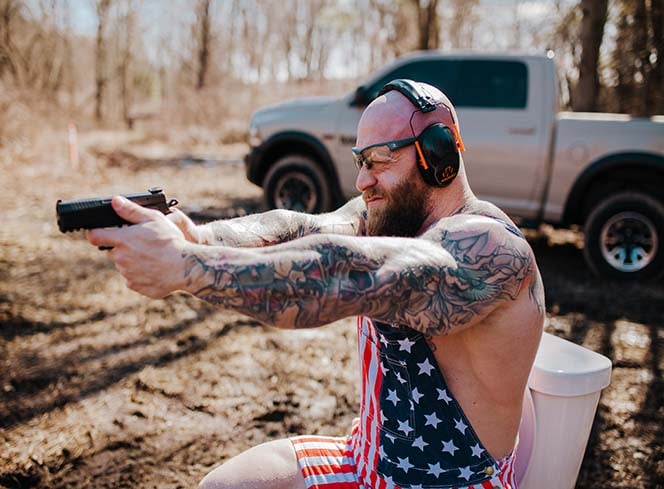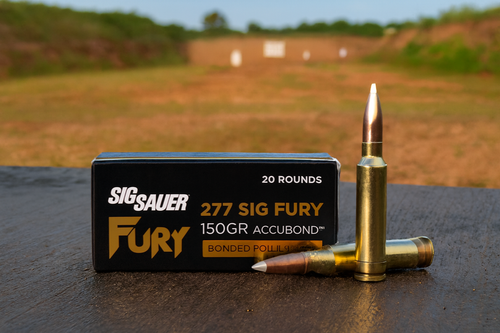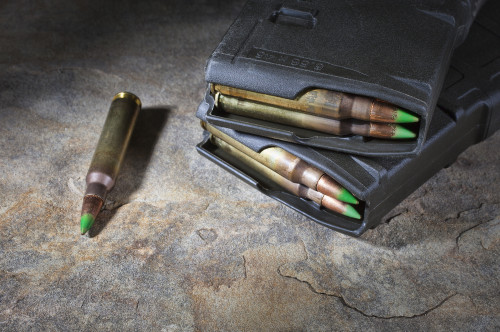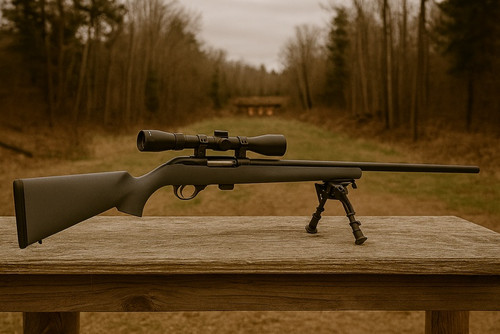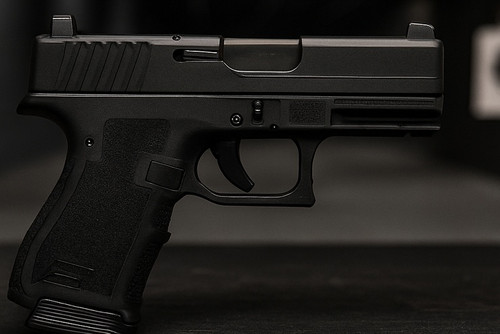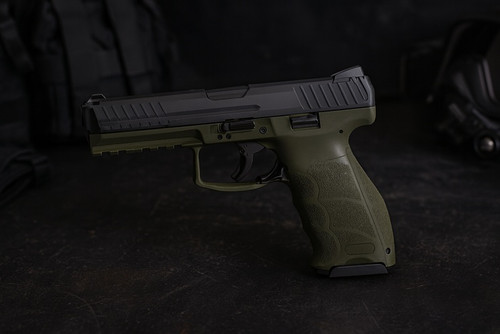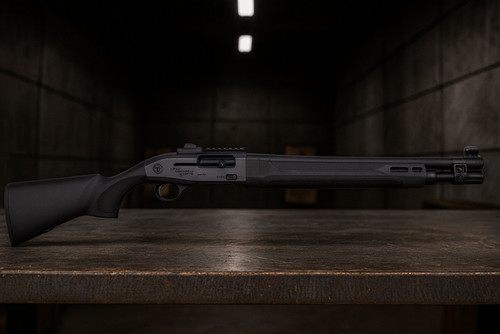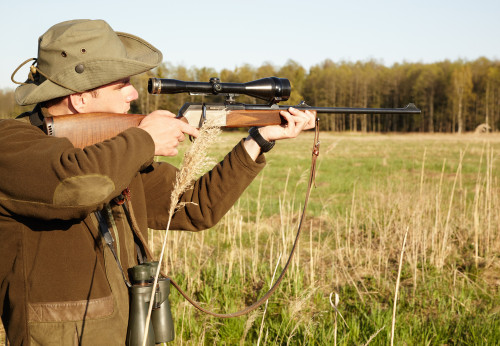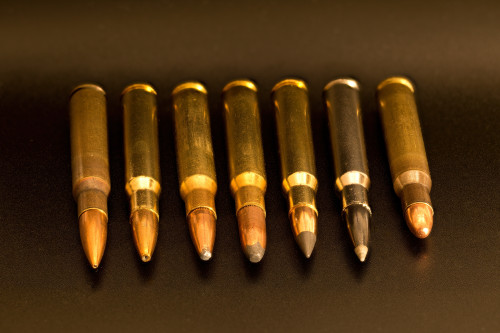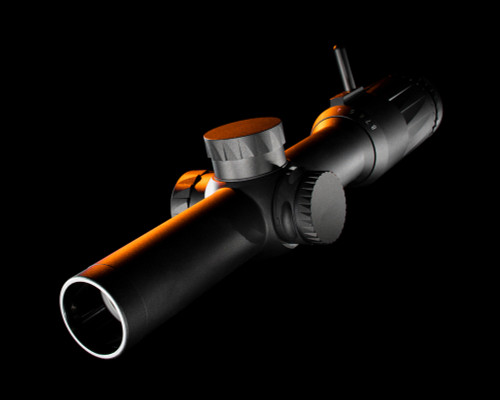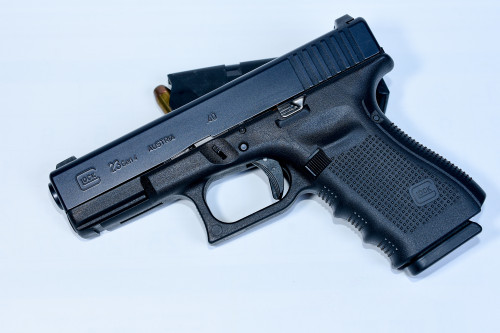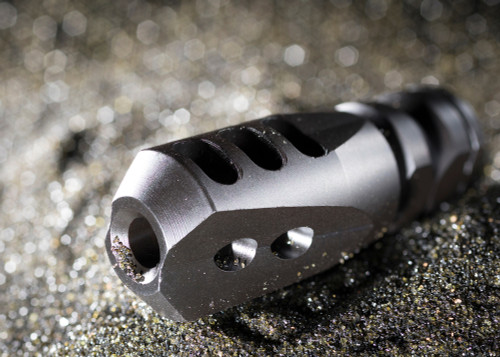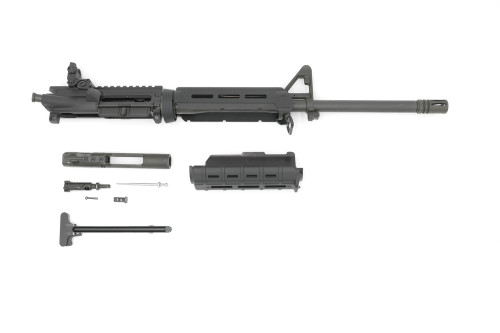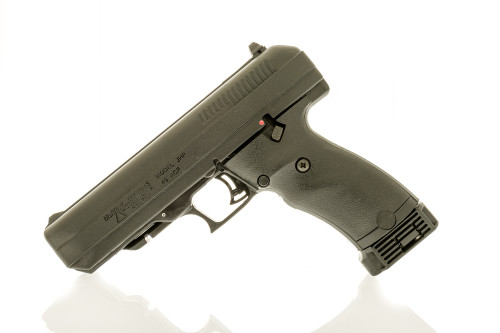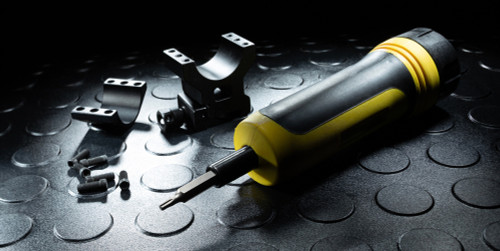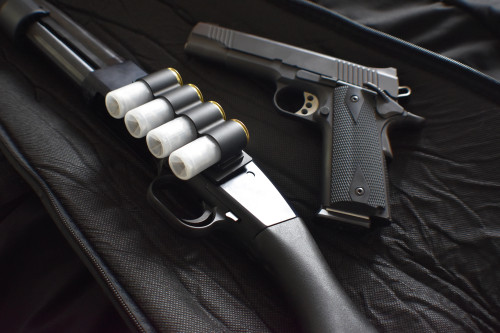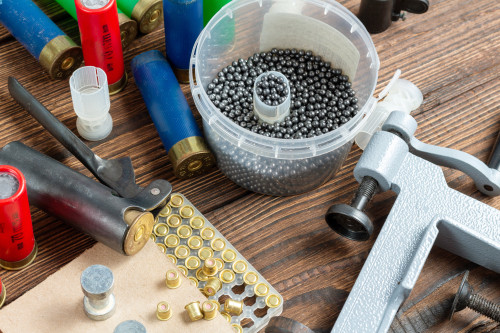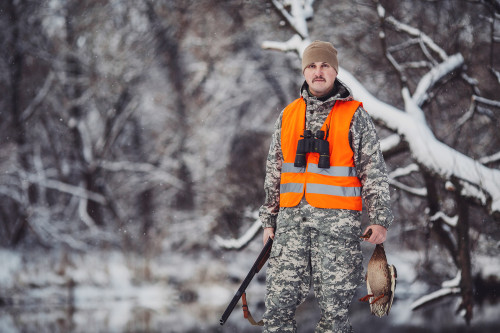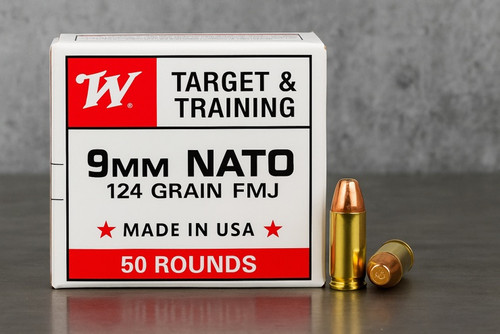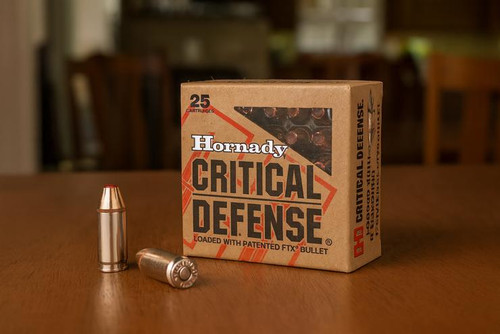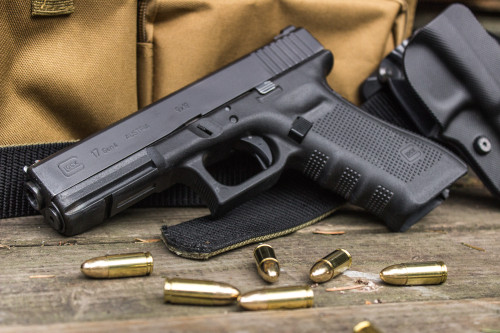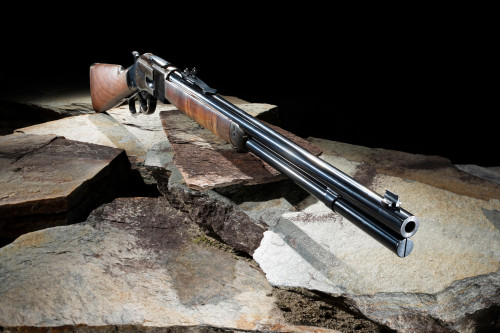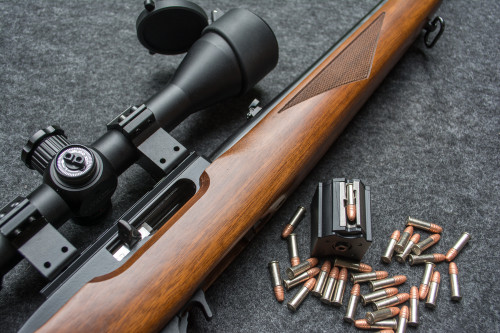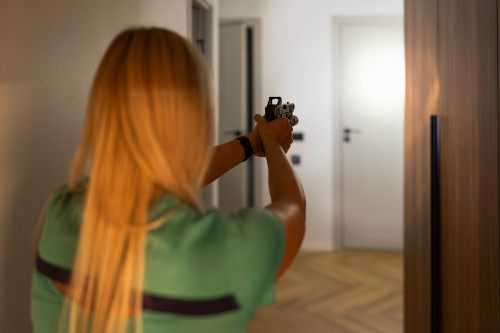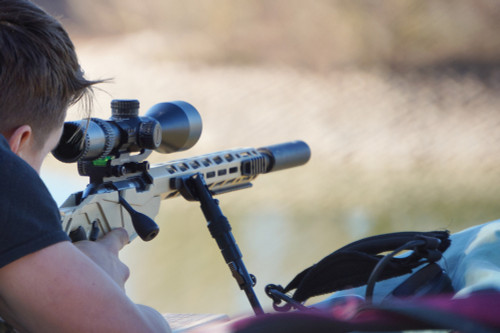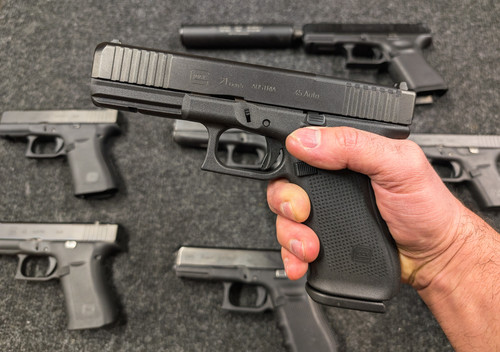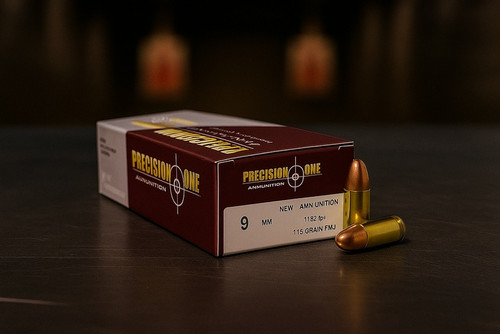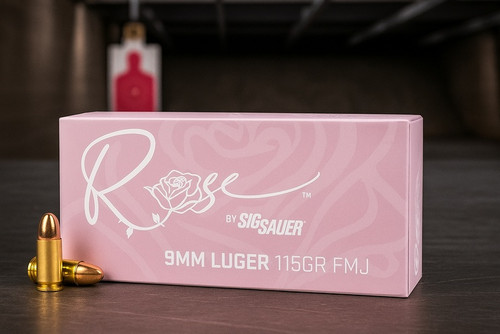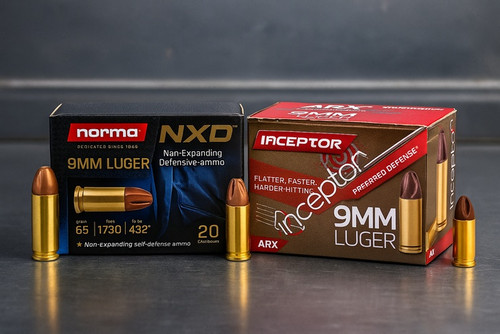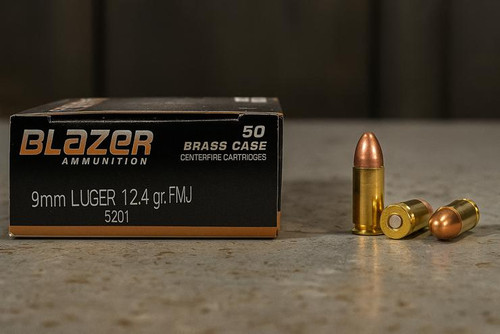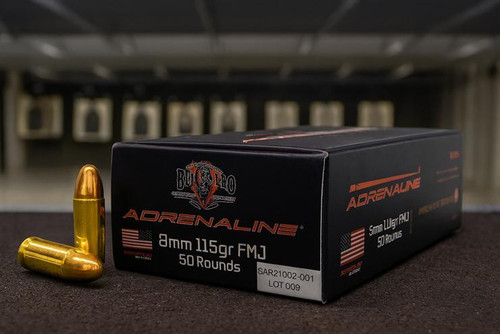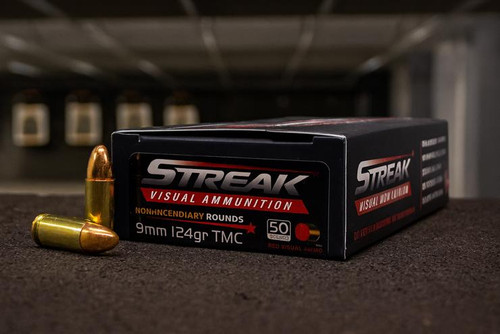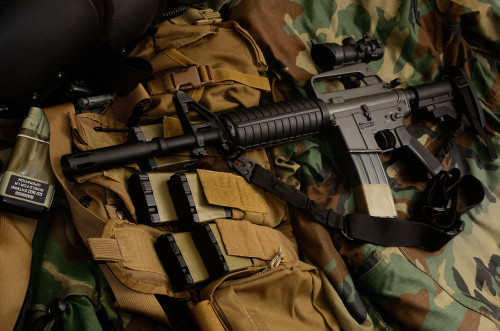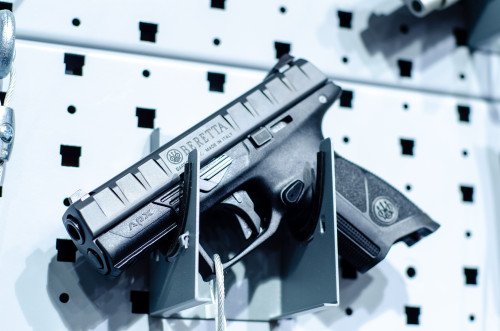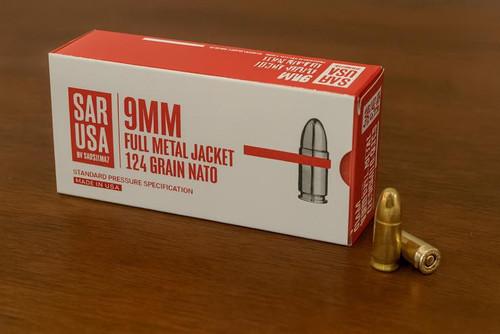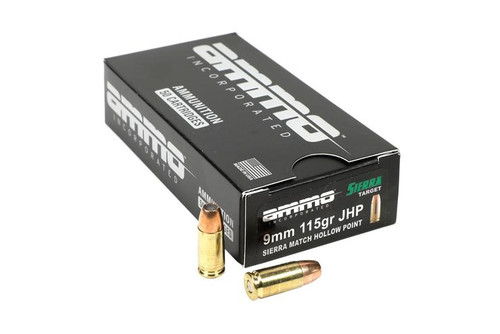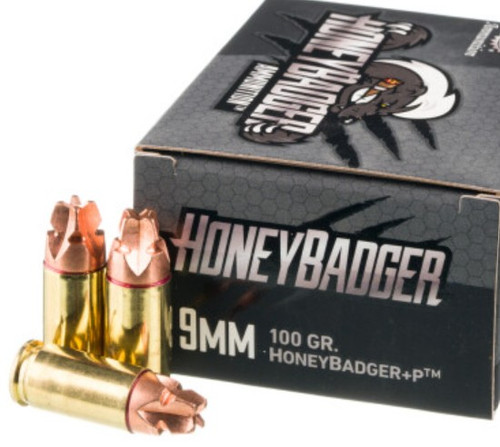Not All 9mm Is Created Equal
On the surface, 9mm seems simple. One caliber, one cartridge, endless shelves of availability. But once you dig past the labels and into the actual design of each load, you realize something important: it’s not just the cartridge—it’s the projectile that defines performance.
Yes, if a box says “9mm Luger” or “9x19mm,” it will chamber and fire in any standard 9mm firearm. But whether that round is ideal for self-defense, training, indoor use, suppressed platforms, or barrier penetration depends heavily on the projectile’s type, weight, and construction.
So no, not just any 9mm ammo will “work” in every situation. Let’s break down the most common types of 9mm projectiles, what they’re designed for, and when to use (or avoid) them.
Full Metal Jacket (FMJ): The Workhorse of the Range
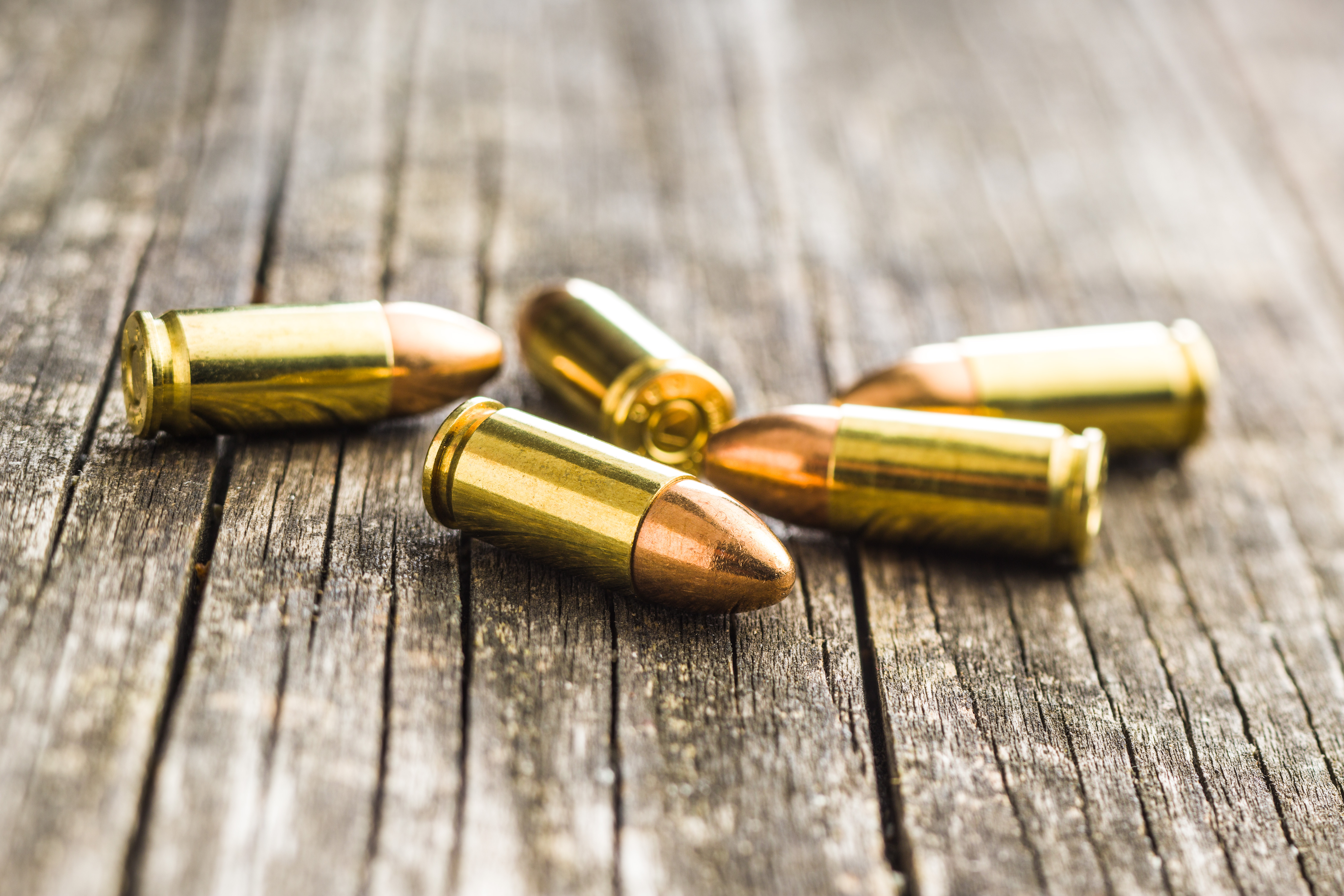
What It Is:
An FMJ projectile consists of a soft lead core encased in a harder metal shell, typically copper or a copper alloy. The jacket covers the nose and sides but leaves the base of the projectile exposed. FMJs do not expand upon impact.
Why It Exists:
FMJ projectiles are engineered for feeding reliability, low manufacturing cost, and deep penetration. They’re simple, rugged, and easy to produce in bulk—perfect for training where expansion or energy transfer is irrelevant.
Best Use Cases:
- Range practice and drills
- Plinking and recreational shooting
- New shooter instruction
- Zeroing optics or testing function
Limitations:
- No expansion means overpenetration is a serious risk in self-defense scenarios
- Not ideal for use in environments with steel targets at close range (due to ricochet potential)
- Can lead to excessive lead exposure indoors due to exposed base and incomplete burn
Summary:
FMJ projectiles are great for high-volume training and skill building but should not be used for carry or defensive applications. Their inability to deform or dump energy into a soft target makes them ineffective—and potentially dangerous—for that purpose.
Jacketed Hollow Point (JHP): Built for Stopping Threats
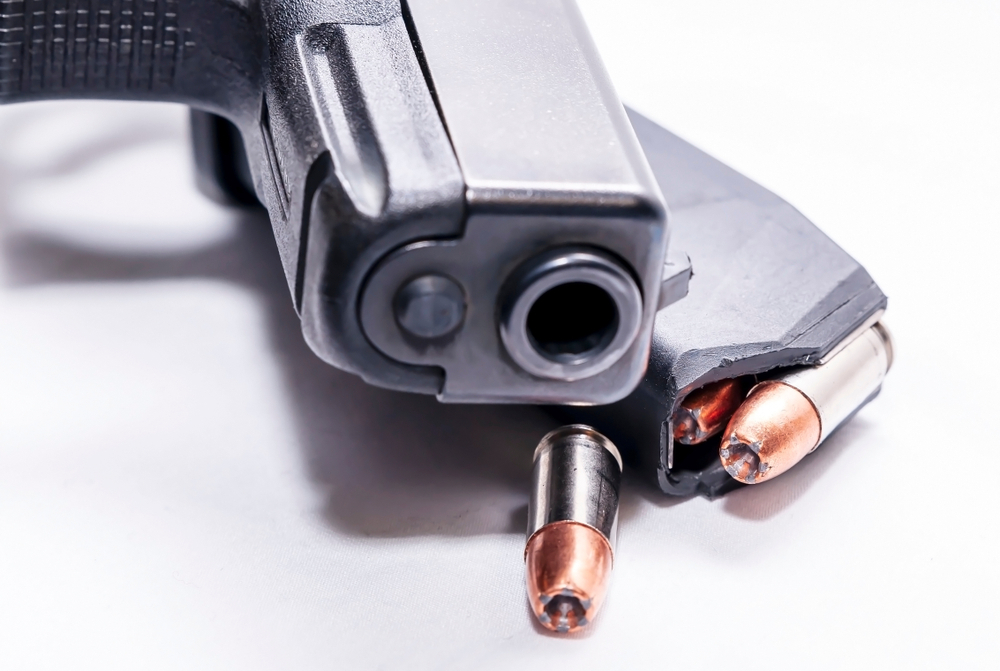
What It Is:
A JHP projectile features a lead core with a copper jacket that leaves a cavity in the nose. This cavity initiates expansion upon contact with a soft target, causing the projectile to mushroom outward and transfer energy more efficiently.
Why It Exists:
JHPs are purpose-built for personal defense and duty applications. Expansion slows the projectile, reduces the chance of overpenetration, and increases the chances of stopping a threat quickly.
Best Use Cases:
- Concealed carry
- Home and personal defense
- Duty or tactical pistols
- Law enforcement and military roles
Limitations:
- Can be more expensive—often double the cost of FMJ
- Some firearms (especially older or subcompact pistols) may have feeding issues with certain JHP shapes
- Not ideal for casual range work due to cost and wear
Summary:
JHP projectiles are the standard for defensive 9mm use. When properly tested in your firearm, they offer the ideal combination of reliable cycling and terminal effectiveness. Just be sure to test your chosen carry load with at least a few mags before trusting it in your EDC setup.
If you want ammo that performs well both on the range and for self-defense, see our tested picks in the Best 9mm Ammo for Range and Self-Defense guide — it highlights loads that balance reliability, accuracy, and terminal performance.
+P and +P+ (Overpressure Loads): More Speed, More Recoil
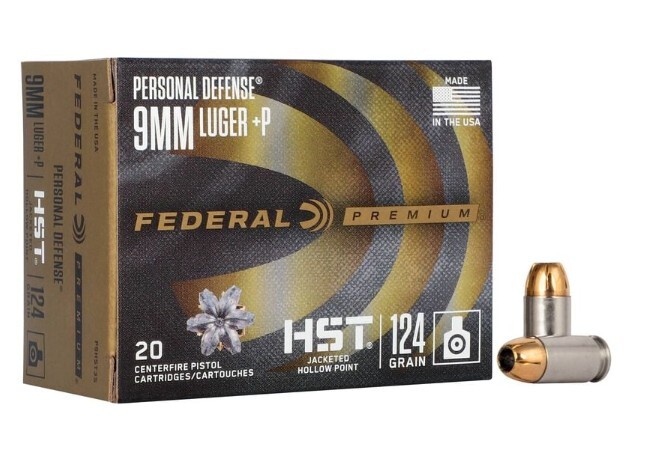
What It Is:
The “+P” designation refers to 9mm cartridges that are loaded to higher internal pressure than standard 9mm—producing more velocity and energy. These can use either FMJ or JHP projectiles, but are most often paired with defensive hollow points.
Why It Exists:
Overpressure loads are designed to enhance projectile performance, particularly in short-barreled handguns where expansion is harder to achieve at lower speeds. The added velocity ensures the projectile meets minimum expansion thresholds.
Best Use Cases:
- Self-defense in subcompact or micro-compact pistols
- Barrier penetration (e.g., glass, heavy clothing)
- Duty carry when additional energy is desired
Limitations:
- Sharper recoil and increased muzzle flip
- Can accelerate wear on internal parts
- Not all firearms are rated for +P/+P+—check your manual
Summary:
+P ammo isn’t better—it’s specialized. If your firearm is rated for it and your chosen projectile expands better with more speed, it can be a worthwhile upgrade. But don’t use it casually or in guns not designed to handle the extra stress.
Subsonic (Typically 147 Grain FMJ or JHP): Suppressor Friendly
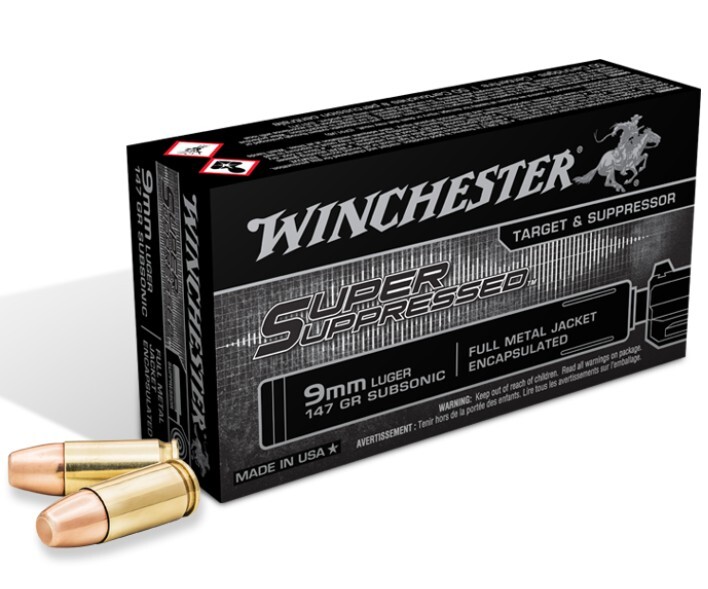
What It Is:
Subsonic 9mm refers to loads with projectiles heavy enough (usually 147 grains or more) to remain below the speed of sound (~1,100 fps), minimizing the supersonic crack when fired.
Why It Exists:
Subsonic loads are ideal for suppressed firearms and often deliver a smoother recoil impulse. The quietest suppressed setups pair subsonic 9mm with a quality silencer and reduced-blowback platform.
Best Use Cases:
- Shooting suppressed pistols or PCCs
- Noise-sensitive environments
- Range drills with softer recoil
Limitations:
- Subsonic FMJ does not expand; use subsonic JHP for defense
- Some pistols may have cycling issues with lower velocity rounds
- Terminal performance is more reliant on projectile design (especially with JHPs)
Summary:
Subsonic projectiles serve a clear purpose: quiet operation. If you shoot suppressed or prefer smoother recoil, they’re a great fit. Just ensure your platform cycles them reliably.
Frangible: Safety Comes First
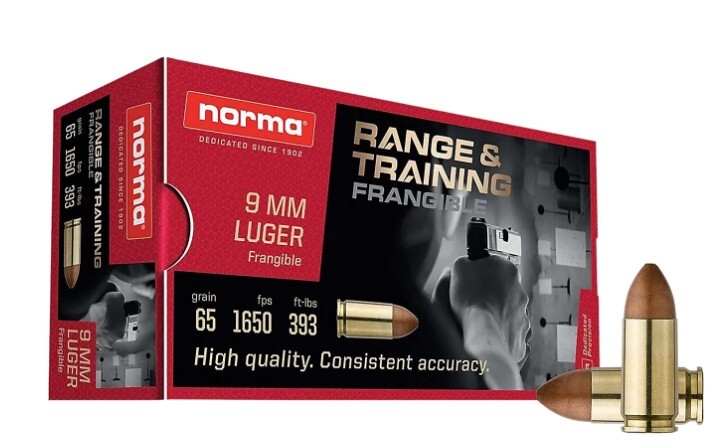
What It Is:
Frangible projectiles are typically made from compressed metal powders (like copper and tin) that disintegrate upon impact with hard surfaces. They’re engineered to minimize ricochet risk.
Why It Exists:
Frangible rounds offer a safer shooting experience on steel targets at close range or in confined training spaces. They’re common in law enforcement shoot houses and indoor tactical training.
Best Use Cases:
- Indoor ranges with steel targets
- Live-fire scenario training
- Shoot house environments
- Reactive target drills with close engagement
Limitations:
- Generally more expensive than FMJ
- Can underperform in soft tissue due to rapid disintegration
- Rarely suitable for defense or barrier penetration
Summary:
Frangible projectiles are a tool for specific training environments, not for all-around use. They protect shooters and instructors when steel or close-quarters targets are involved.
Lead-Free and Enclosed Base: Built for Indoor Ranges
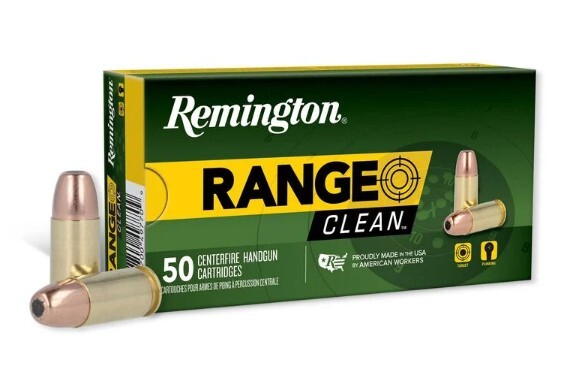
What It Is:
These projectiles are often fully enclosed (TMJ/FNEB) or made without lead entirely, designed to minimize airborne lead and protect range ventilation systems.
Why It Exists:
Indoor shooting exposes shooters to vaporized lead from projectile bases and primers. Enclosed base or lead-free designs dramatically reduce this exposure—a major benefit for instructors, range staff, and frequent indoor shooters.
Best Use Cases:
- Indoor ranges
- High-round-count training days
- Situations where air quality or safety is a concern
Limitations:
- More expensive than basic FMJ
- Less commonly stocked in small gun shops
- Not designed for defense or expansion
Summary:
If you shoot indoors regularly—or operate a training facility—these projectiles make a real difference in safety and cleanliness. They’re worth the extra few cents per round for long-term health benefits.
Lead-free and frangible options serve important roles in environments that restrict lead or require reduced overpenetration — for a focused look at tradeoffs and top choices, see our Lead-Free Ammo Comparison.
Final Thoughts: Match the Projectile to the Purpose
9mm is a flexible and highly capable caliber, but its effectiveness is completely dependent on the projectile you choose. You wouldn’t use a drill bit to drive a nail—and you shouldn’t expect FMJ to stop a threat or JHP to hit steel all day without draining your wallet.
Ask yourself:
- What am I training for?
- What does my firearm support?
- Do I prioritize cost, quietness, barrier penetration, or expansion?
There’s a projectile designed for each of those answers—and choosing the right one means safer, more effective shooting.
Bottom line: Just because a cartridge fits in your gun doesn’t mean it’s the right tool for the job. Know your projectile, and you’ll get more out of every magazine.
FAQs
1. Can I use any 9mm ammo in my pistol?
Mechanically, most 9mm pistols can chamber and fire a wide variety of 9mm Luger ammo, including FMJ, JHP, and specialty loads. But just because it fits doesn’t mean it’s the right choice. The best ammo for your gun depends on how you're using it—whether for training, defense, or competition.
2. What’s the difference between FMJ and JHP ammo?
FMJ (Full Metal Jacket) is primarily used for training and target shooting. It's affordable, easy to find, and cycles reliably.
-JHP (Jacketed Hollow Point) is designed to expand on impact, making it ideal for self-defense due to better stopping power and reduced risk of over-penetration.
-Use FMJ for practice and JHP for carry or defense unless you're running specialty rounds with a defined purpose.
3. Is 9mm frangible ammo good for everyday use?
Frangible ammo is designed to break apart on hard surfaces, reducing ricochet risk. It’s great for shoot houses, steel targets, and indoor ranges, but not ideal for carry or standard training due to cost and different recoil characteristics. It's a tool for specific scenarios, not a do-it-all round.
4. Why does projectile weight matter in 9mm?
Projectile weight (e.g., 115gr vs. 147gr) affects recoil, trajectory, and terminal performance. Lighter bullets tend to be faster with less recoil, while heavier bullets offer better momentum and penetration. Your choice should be based on the gun you’re using and the task at hand—there’s no universal best weight.
5. What’s the most versatile 9mm ammo for general use?
For training and recreational shooting, 115gr or 124gr FMJ from a reputable brand is the most versatile, cost-effective option. For carry, look for 124gr or 147gr JHP loads that have passed ballistic testing (like Speer Gold Dot or Federal HST). Always test your chosen ammo in your own firearm before relying on it.



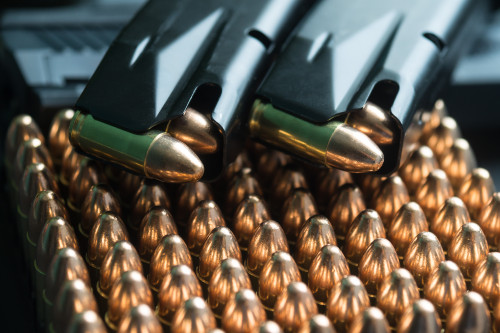
 Pro Armory Editorial Team
Pro Armory Editorial Team